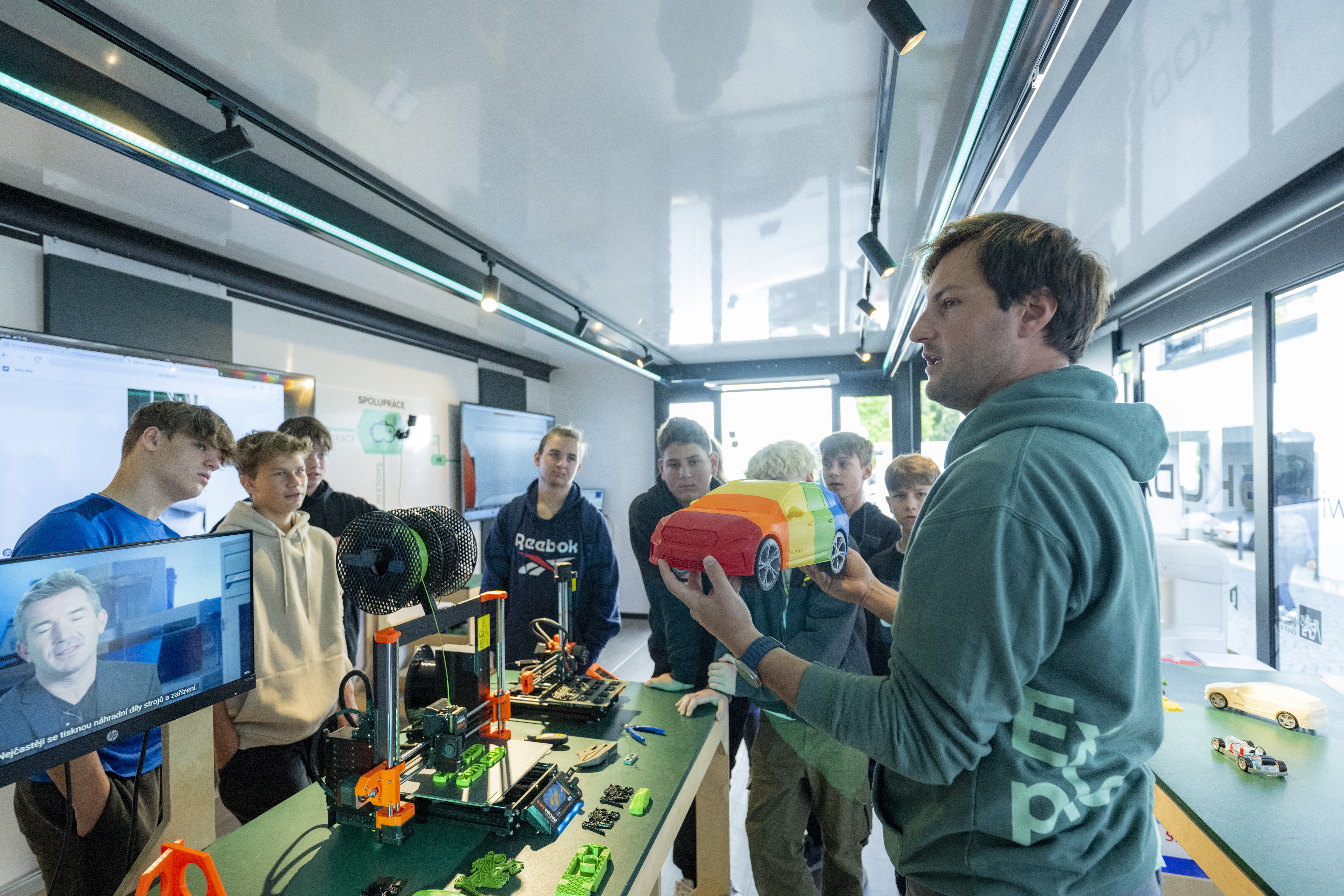“Fifty million... a billion... three million...” shout the eighth-graders at a primary school in Liberec, who are currently being given a tour of the mobile educational laboratory EDU.Lab. The children are guessing how many cars Škoda produces a year. “Something around a million,” they finally agree, picking the answer that is closest to reality (731,000 cars delivered in 2022). The instructor then continues to show them the special semi-trailer that has been touring the Czech Republic and Slovakia since 2021.
 EDU.lab will visit every Czech region and numerous locations in Slovakia by the end of 2025.
EDU.lab will visit every Czech region and numerous locations in Slovakia by the end of 2025.
The laboratory is mainly aimed at pupils in the seventh, eighth and ninth years of primary schools and the third and fourth years of secondary vocational schools and grammar schools. But everyone has the chance to see it – each stop usually comprises four pre-booked slots per day for visits by pupils from specific schools and one afternoon slot for curious members of the general public. In total, the aim is to reach tens of thousands of schoolchildren over the course of the programme and to create enthusiasm for technology. “It’s important for us to get pupils to go to technical colleges. We are not looking to promote any particular university, merely to generate a general interest in technical education,” says lecturer Tadeáš Salaba, who guides the schoolchildren around the mobile laboratory.
 Visitors can also see demonstrations of modelling technologies and the use of AI to assist creative processes.
Visitors can also see demonstrations of modelling technologies and the use of AI to assist creative processes.


































